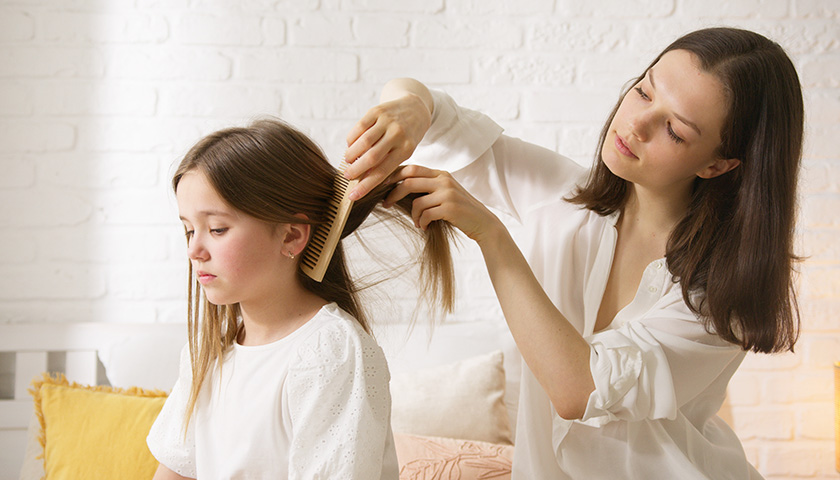by Debra Heine
The American Academy of Pediatrics (AAP) now recommends against sending children infested with head lice home from school because doing so may “stigmatize” them, “violate their civil rights,” and/or cause “psychological stress.”
The AAP updated its guidance on head lice this week for the first time since 2015.
According to the new guidance, lice infestations are neither a health hazard nor a sign of poor hygiene, and “no-nit” school policies may stigmatize children suspected of having head lice, resulting in “psychological stress.”
The updated guidance states that “no healthy child or adolescent should be excluded from school” because of head lice or nits.
The guidance recommends that if head lice is identified, the student’s caregiver should be notified by telephone or by having a note sent home with the child at the end of the school day, “stating that prompt, proper treatment of this condition is in the best interest of the child or adolescent and his or her classmates.”
The AAP recommends a variety of safe and affordable treatments that are able to rapidly rid children of live lice and nits.
Common sense and calm should prevail within a school when deciding how “contagious” an individual may be (a child or adolescent with hundreds versus a child or adolescent with 2 live lice). It may be prudent to check other children or adolescents who are symptomatic or who were most likely to have had direct head-to-head contact with the infested child or adolescent.
Some experts argue that, because of the relatively high prevalence of head lice in young school-aged children, it may make more sense to alert caregivers only if a high percentage of children in a classroom are infested. Other experts feel strongly that these “alert letters” violate privacy laws, cause unnecessary public alarm, and reinforce the notion that a head lice infestation indicates a failure on the school’s part rather than a community problem.
However, studies examining the efficacy of alert letters are not available; consequently, some schools choose to design guidelines that they believe best meet the needs of their student population, understanding that, although a head lice infestation may not pose a public health risk, it may create a public relations dilemma for a school. Regardless of the extent of the communication on a specific case, schools may wish to provide general education to their constituency that head lice is not a public health hazard.
The AAP argues against head lice screening programs in schools, stating that such programs “have not been proven to have a significant effect over time on the incidence of head lice” in schools, “are not cost-effective, and may stigmatize children suspected of having head lice.”
Instead, the AAP recommends “educational programs” to help families manage their children’s head lice.
“No healthy child or adolescent should be excluded from school or allowed to miss school time because of head lice or nits,” the AAP guidance says. “Medical providers should educate school communities that no-nit policies for return to school should be abandoned, because such policies would have negative consequences for children’s or adolescents’ academic progress, may violate their civil rights, and stigmatize head lice as a public health hazard.”
– – –
Debra Heine reports for American Greatness.
Photo “Checking for Lice” by Artem Podrez.




